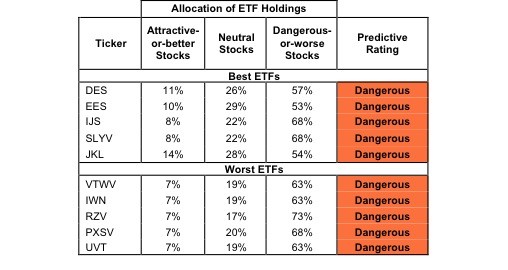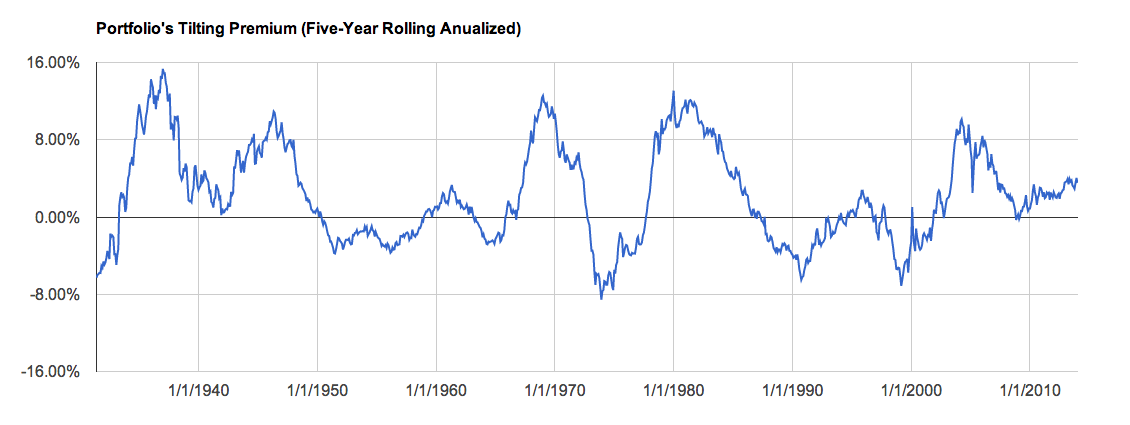Tough To Find Quality In SmallCap Value Funds
Post on: 1 Июнь, 2015 No Comment

Follow Comments Following Comments Unfollow Comments
The small-cap value style ranks last out of the twelve fund styles in my Style Rankings for ETFs and Mutual Funds report.
I assess ETFs and mutual funds based on the quality of their holdings, first and foremost, because holdings determine the performance of the fund, not just the costs or the past performance of the fund. My predictive ratings are based on (1) the aggregated stocks ratings of the holdings and (2) the all-in expenses of each ETF and mutual fund. Costs matter because they can handicap performance of a fund, but the quality of holdings is paramount because no matter how cheap the fund, the performance will be bad if the holdings are bad.
The best ETFs and mutual funds allocate more value to attractive-or-better-rated stocks than the worst, which allocate too much value to neutral-or-worse-rated stocks.
Fenimore Asset Management Trust: FAM Small Cap Fund (FAMFX) and Baird Funds, Inc: Baird SmallCap Value Fund (BSVIX) are excluded from Figure 2 because their total net assets (TNA) are below $100 million and do not meet our liquidity standards.
WisdomTree SmallCap Dividend Fund (DES) is my top-rated small-cap value ETF and earns my dangerous rating. Westcore Trust: Westcore Small-Cap Value Fund (WISVX) is my top-rated small-cap value mutual fund and earns my neutral rating.
ProShares Ultra Russell2000 Value (UVT) is my worst-rated small-cap value ETF and ProFunds: Mid-Cap Value ProFund (MLPSX) is my worst-rated small-cap value mutual fund. Both earn my very dangerous rating.
No ETFs or mutual funds in the small-cap value style allocate enough value to attractive-or-better-rated stocks to earn an attractive rating. Focus on individual stocks instead.

Lexmark International. Inc. (LXK) is one of my favorite stocks held by small-cap value ETFs and mutual funds and earns my very attractive rating. LXK is a solid, if unspectacular, performer. It has grown after tax profit (NOPAT ) by 4% compounded annually for the past 13 years. A current free cash flow yield of 11% bodes well. Rigorous back testing has shown that companies with a free cash flow yield of >10% consistently outperform the S&P 500 by a wide margin. The most attractive aspect of LXK, however, is its extremely low valuation. At its current share price of
$23.30, LXK has a price to economic book value ratio of 0.3. This ratio means the market is expecting LXK to experience a permanent decline of 70% inNOPAT. Such low market expectations combined with strong historical performance means good risk/reward for investors.
Sovran Self Storage, Inc (SSS) is one of my least favorite stocks held by small-cap value ETFs and mutual funds and earns my Very Dangerous rating. SSS has experienced a decline in NOPAT for two out of the past three years. It has not earned positive economic profits in any year going back to 1998 when our model begins. Despite these poor results, SSS is valued at
$67/share. This valuation implies 19% growth in NOPAT compounded annually over the next 15 years. Such high expectations seem overly optimistic for a company with no recent track record of economic profitability. SSS offers investors too much risk for too little potential reward.
Disclosure: David Trainer and Sam McBride receive no compensation to write about any specific stock, sector or theme.














